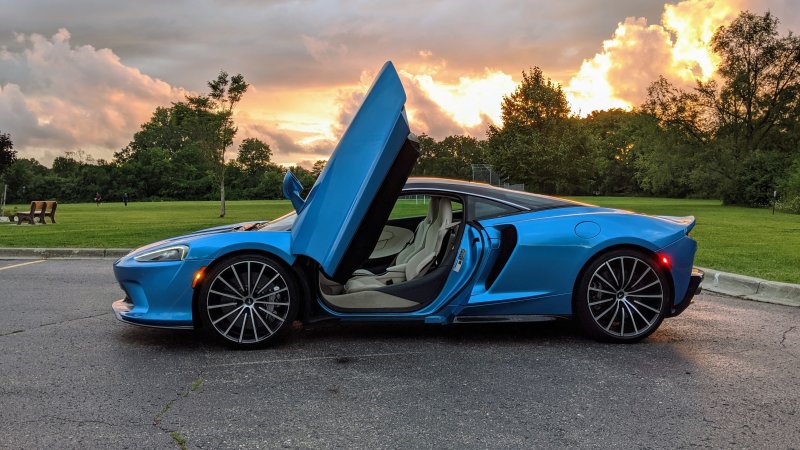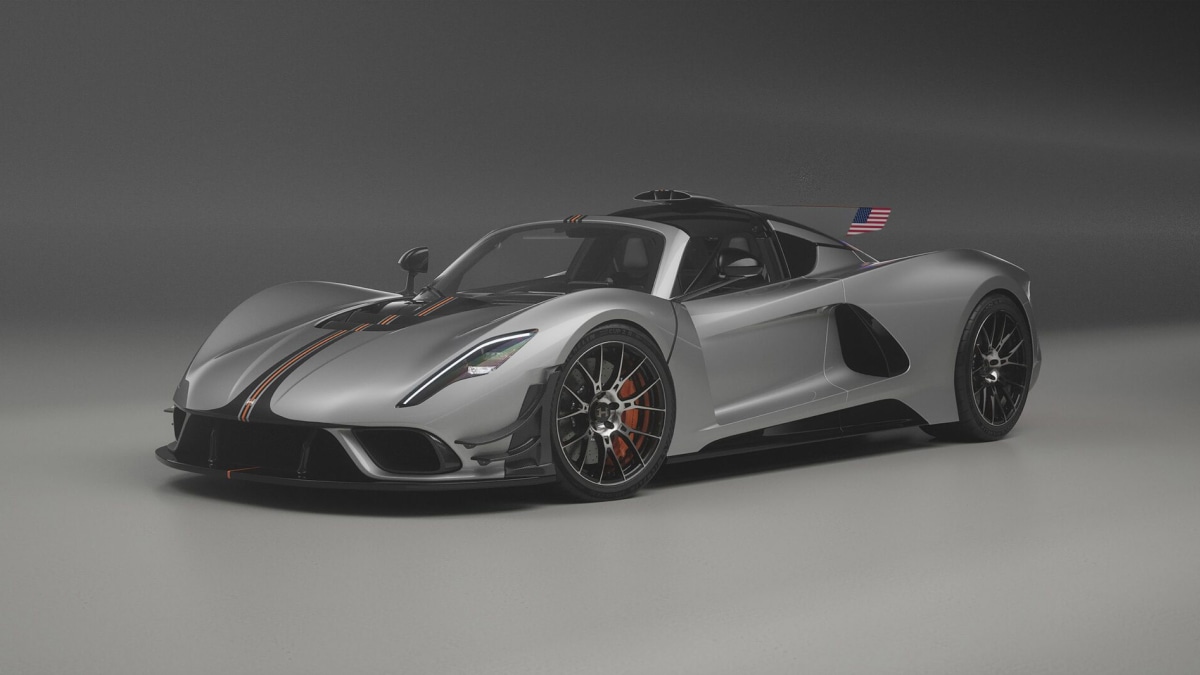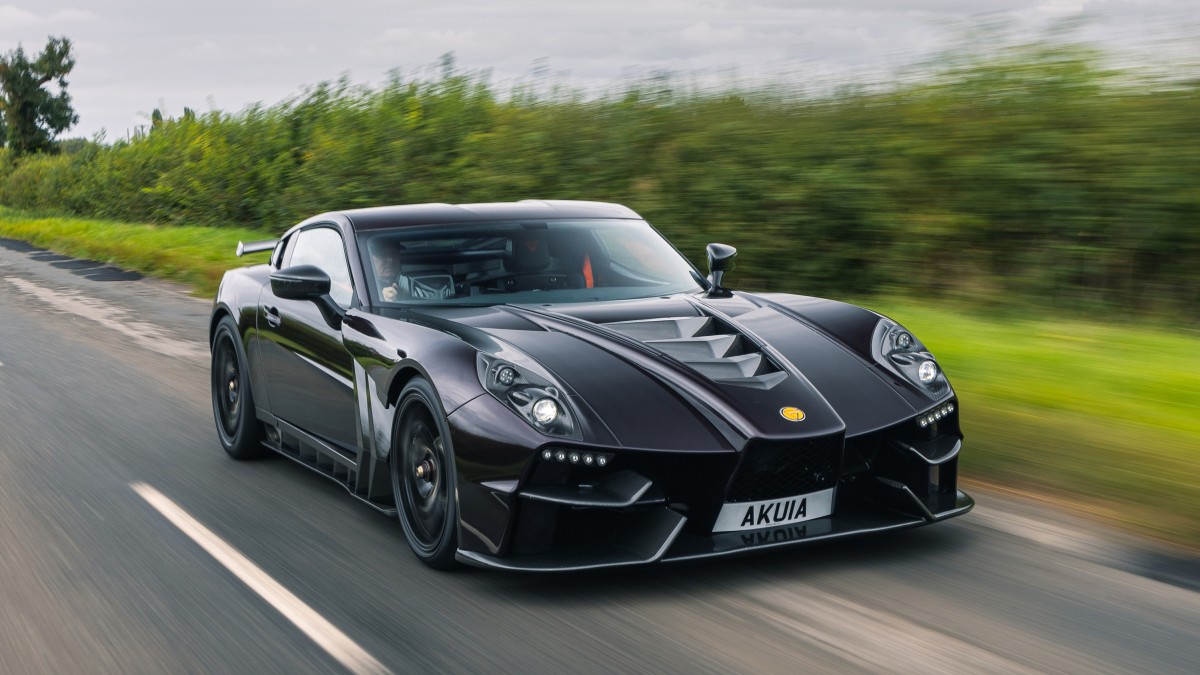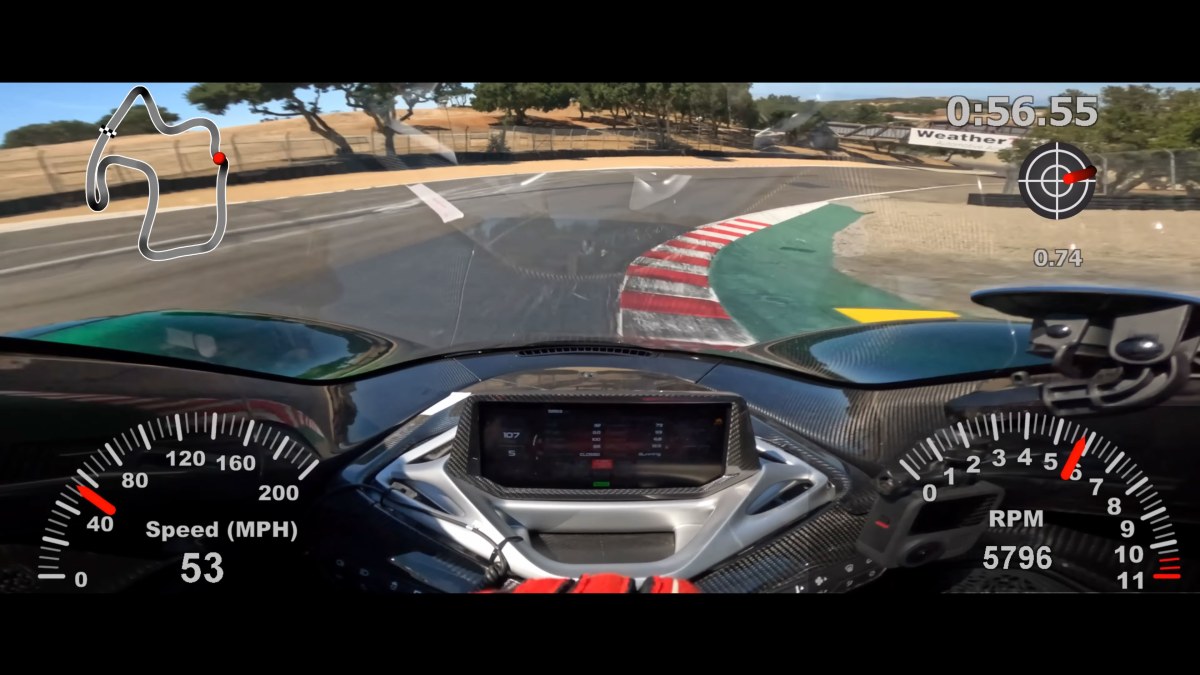As the winter settles in, I find myself reflecting on the most memorable cars that I’ve tested this year. Chief among them, the McLaren GT.
I drove the GT on a damp midsummer evening. After a lengthy heatwave, temperatures dipped into the low 60s and it was raining lightly. Not the ideal time to drive a $263,000 supercar. And yet, it was impossible not to be excited and curious.
McLaren has come a long way in a short time. With a decade under its belt as a standalone automotive operation, the company is delivering on ambitious growth plans and now counts four product lines in its portfolio, ranging from the Ultimate to this GT.
It’s a surprising trajectory considering McLaren is best known for making shooting stars, like the 1990s F1 that captured the zeitgeist for supercars of that era. The F1 was followed by the indelible Mercedes-McLaren SLR from 2003-2010.
It wasn’t until 2011 that McLaren Automotive — freshly spun off from the racing team — attempted a credible road-going car that could actually be purchased and driven by normal enthusiasts. That car, the 12C, was a first step that ultimately led to proliferation of vehicles and technology for McLaren.
After a few hours of spirited driving the GT, my conclusion boiled down to one word: maturity. It over-delivered as a grand tourer, though the car is about as much of a GT as the Ford GT, which is to say, not much. My back was a little tight when I returned home, fatigued but not abused. The McLaren GT is a driving workout on par with an Audi R8 or Lamborghini Huracán.
Performance? It has plenty. But also notable, the fit-and-finish is solid, the looks are striking and it felt like the product of a company that’s been doing this for awhile, which McLaren hasn’t. Certainly competitive with Ferraris and Lamborghis and interesting in its own way. A small shop like McLaren is always going to face challenges achieving scale and consistent prosperity, and the pandemic wreaked havoc on the automaking and racing units. Still, the GT is indicative the company can expand without overreaching.
As I parse my notes from that drive, here’s three takeaways that remain with me, months later, crystallizing the GT’s place in the modern performance world.
Exterior design: More than just the doors
The GT is one of the best-looking McLarens of this or any era. The cowls on the side behind the doors give the car a sinister, almost Decepticon vibe, but the rest of the car is relatively subtle. The proportions are near perfect. The GT reminds me of some of the best Pininfarina stylings for Ferrari’s mid-engine cars. As dusk settled and I raced to get in a quick photo shoot, qualities like the LED headlights and pencil-thin taillights naturally stood out. The front diffuser and vents are simple, especially in black. Along with the striking wheels, the GT’s features nicely accent its silhouette.
Oh, and of course, this and all McLarens have dihedral doors. It’s easy to speak a soft design language when the doors shoot straight up in the air. Make no mistake, the GT stands out, but to my eye, it’s a holistic approach, rather than the gluttonous buffet of carbon-fiber and copious style creases favored by other brands.
Interior: Simple, but not cheap
Another neat feature: ambient lighting that displays light flecks on the dash and armrests. It’s not visible at first, but as the golden hour faded to total darkness, the GT’s cabin reassured me with a soft glow. Oh, and the Bowers & Wilkins sound system is excellent. I almost missed that. The GT is the rare car that demands your full attention, entertains you with its sounds and creates an atmosphere for the drive, which in a supercar like this can border on sublime. But hey, who doesn’t like music? As I sat in my driveway I toggled among the studio, live and driver-focused sound settings as I listened to a couple of old Springsteen tracks.
Driving experience: Not an abuse of power
The 4.0-liter twin-turbo powerplant does not disappoint. With 612 hp you can hit 60 mph in 3.1 seconds, which is a legit figure, and the seven-speed dual-clutch holds gears aggressively but smartly.
As my drive continued, I began to push the McLaren a bit, playing with more aggressive drive settings and getting quicker on the throttle. The reflexes are outstanding, returning an almost instant and powerful bite from the brakes. The steering is more direct than the Aston DB11, but lighter than some Ferrari and Lamborghinis I’ve tested. McLaren does a good job of making the driver respect the car without being abusive. Things like great visibility help.
To draw things together …
Despite the GT billing, this car feels much more like a supercar. Considering its powerful engine and carbon monocell, it is one, as far as I’m concerned, but the GT was reasonably forgiving over metro Detroit’s broken roads. I meandered west over the area’s ‘mile’ roads, then up and down Woodward Avenue, finding myself at the M1 Concourse, a 1.5-mile road course anonymously tucked into the suburbs. I pulled up to the private entrance for members, thinking I might get waved in by a guard (If someone pulled up to a racetrack in a McLaren, I’d probably let them in), but it was after hours and the gate was closed, so I turned back.
I completed my stint with a sprint across town and then up Interstate 75, alternately accelerating hard, clacking through gears with the paddles and then docilely falling back in traffic. The GT doesn’t have a split personality, but it can adapt to any situation an enthusiast might present it with, even on a damp summer drive in the middle of a pandemic. This is a decent GT and an excellent performance car, which is the right formula for McLaren.




